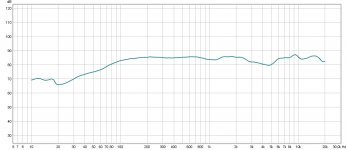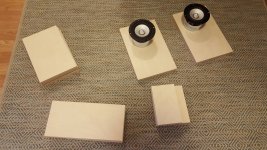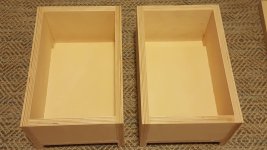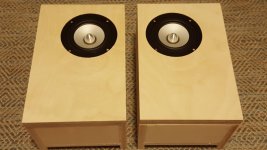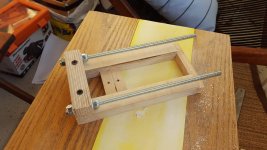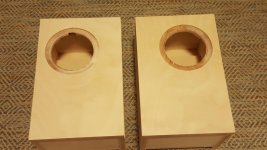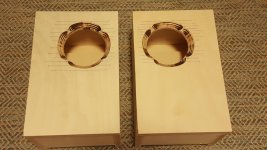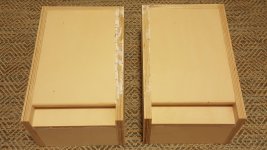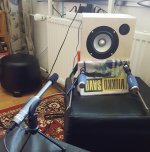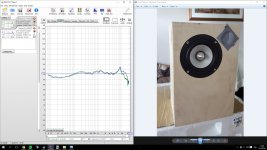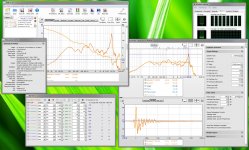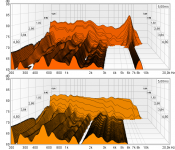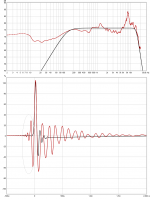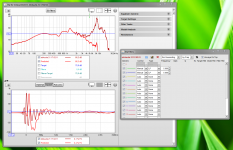Hello all. I'm back here in form of a new project. Last years FAST with TL project was a massive success, and my friend is still enjoying those speakers greatly.
This years project will be a desktop monitor speaker with Tangband W4-657SC full range and Dayton Mini-8 AMT tweeter as an assist. I already have these drivers in storage, so no other options I will build these as active speakers, with a TDA8932 chip driving each speaker. Still haven't decided if I should have 1st order PLLXO for speakers with a separate amp for each channel and speaker-level baffle step correction OR speaker-level passive crossover with line-level adjustable baffle step and a single chip per speaker. Suggestions are most welcome. It's also possible that I put both PLLXO and speaker level first-order crossovers to get a -12dB/oct slope. Lots more variety with this option and less chance of blowing the tweeter.
I will build these as active speakers, with a TDA8932 chip driving each speaker. Still haven't decided if I should have 1st order PLLXO for speakers with a separate amp for each channel and speaker-level baffle step correction OR speaker-level passive crossover with line-level adjustable baffle step and a single chip per speaker. Suggestions are most welcome. It's also possible that I put both PLLXO and speaker level first-order crossovers to get a -12dB/oct slope. Lots more variety with this option and less chance of blowing the tweeter.
I will buy a miniDSP to help with the crossover design and fine-tuning. About time I get it
Building material will be 18mm BB ply, but other thicknesses are also possible. For enclosure, I am planning on building a (internal dimensions WxDxH) 18x11x29cm "golden ratio" reflex box with a 11x1,3x16cm port which should set the tuning to about 70Hz. Drivers will be aligned off-center to minimize baffle diffractions with the full range situated 98 mm from left edge and 190mm from bottom edge on the 216mm x 326mm front baffle. Baffle edges will be rounded. Something around this size is the maximum for enclosure, but suggestions are welcome as always
This years project will be a desktop monitor speaker with Tangband W4-657SC full range and Dayton Mini-8 AMT tweeter as an assist. I already have these drivers in storage, so no other options
I will buy a miniDSP to help with the crossover design and fine-tuning. About time I get it
Building material will be 18mm BB ply, but other thicknesses are also possible. For enclosure, I am planning on building a (internal dimensions WxDxH) 18x11x29cm "golden ratio" reflex box with a 11x1,3x16cm port which should set the tuning to about 70Hz. Drivers will be aligned off-center to minimize baffle diffractions with the full range situated 98 mm from left edge and 190mm from bottom edge on the 216mm x 326mm front baffle. Baffle edges will be rounded. Something around this size is the maximum for enclosure, but suggestions are welcome as always
Last edited:
This forum doesn't seem as active as it used to be...
Anyhow, made material changes. New building material will be 15mm plywood for all others and 24mm ply for the front baffle. I scaled the box down just a tiny bit, the new outside dimensions will be 300x196x164mm. Tuning is to 70,5Hz.
For crossover my current mind is to try line-level 1st order XO along with speaker level baffle step on woofer & additional XO cap for tweeter. I will match levels with line-level components. I am a bit worried about the peaks both tweeter at FR have at about 6-7kHz area, but I will tackle that problem when it comes along.
I will update this project as it progresses.
Anyhow, made material changes. New building material will be 15mm plywood for all others and 24mm ply for the front baffle. I scaled the box down just a tiny bit, the new outside dimensions will be 300x196x164mm. Tuning is to 70,5Hz.
For crossover my current mind is to try line-level 1st order XO along with speaker level baffle step on woofer & additional XO cap for tweeter. I will match levels with line-level components. I am a bit worried about the peaks both tweeter at FR have at about 6-7kHz area, but I will tackle that problem when it comes along.
I will update this project as it progresses.
Hi Mayuri remember last years nice FAST TL project and glad to hear its still enjoyed.
For your new project building desktop monitor speaker it seems you have most covered, regarding tweeters its many years ago i worked with such myself and using a real tweeter is probably one reason when thread is posted on "Full Range forum" together with its holyday season time all over EU that you have slow response into this thread.
For your new project building desktop monitor speaker it seems you have most covered, regarding tweeters its many years ago i worked with such myself and using a real tweeter is probably one reason when thread is posted on "Full Range forum" together with its holyday season time all over EU that you have slow response into this thread.
Hey BYRTT 
Using a tweet is somewhat of a necessity in this application I think. This project is also for another friend: He explicitly told me he will listen to these while moving about the room. Looking at the directivity response graphs for the W4-657, it seems they drop quite a bit with higher frequenzies when you go past 30 degrees. On the other hand, the mini tweeter has a very nice directivity, which would allow high frequenzies still be audible.
Anyhow, the real thing that is worrying me is the crossover. While I'm still crossing high, I worry about damaging the tweeter. I have not much experience tampering with them.
EDIT: Also, if this would be more suitable for Multi-Way, mods should feel free to move it there. I thought crossing over the conventional XO area would sit it better in Full-Range as I've seen people use assist tweeters in projects, especially with larger FR drivers.
Using a tweet is somewhat of a necessity in this application I think. This project is also for another friend: He explicitly told me he will listen to these while moving about the room. Looking at the directivity response graphs for the W4-657, it seems they drop quite a bit with higher frequenzies when you go past 30 degrees. On the other hand, the mini tweeter has a very nice directivity, which would allow high frequenzies still be audible.
Anyhow, the real thing that is worrying me is the crossover. While I'm still crossing high, I worry about damaging the tweeter. I have not much experience tampering with them.
EDIT: Also, if this would be more suitable for Multi-Way, mods should feel free to move it there. I thought crossing over the conventional XO area would sit it better in Full-Range as I've seen people use assist tweeters in projects, especially with larger FR drivers.
Last edited:
Year to unite directivity to tweeter best as possible can probably give some speculation and work, but if miniDSP is on the way it should be your flexible friend and be more fun to dial in best XO point and slopes.
You probably aware already but below free tools can maybe help you for passive setups or PLLXO or combination to make sim predictions and planning:
REW (use "All SPL" tab to plus/minus/times/over for curves from frd or IR wav files and export them too) REW - Room EQ Wizard Room Acoustics Software
FPGraphTracer (make frd and zma files from datasheet pictures of curves) FPGraphTracer : fprawn labs
XSim (passive XO / EQ / impedance correction design tool, can export curves too and show transients for a given frd-file linked to a driver)http://www.diyaudio.com/forums/multi-way/259865-xsim-free-crossover-designer.html#post4007730
Rephase (make IRR high/low/band pass filters as IR-wav files and use them into REW's "SPL tab" math to make predictions summed with other curves http://www.diyaudio.com/forums/mult...zation-eq-fir-filtering-tool.html#post3199084
You probably aware already but below free tools can maybe help you for passive setups or PLLXO or combination to make sim predictions and planning:
REW (use "All SPL" tab to plus/minus/times/over for curves from frd or IR wav files and export them too) REW - Room EQ Wizard Room Acoustics Software
FPGraphTracer (make frd and zma files from datasheet pictures of curves) FPGraphTracer : fprawn labs
XSim (passive XO / EQ / impedance correction design tool, can export curves too and show transients for a given frd-file linked to a driver)http://www.diyaudio.com/forums/multi-way/259865-xsim-free-crossover-designer.html#post4007730
Rephase (make IRR high/low/band pass filters as IR-wav files and use them into REW's "SPL tab" math to make predictions summed with other curves http://www.diyaudio.com/forums/mult...zation-eq-fir-filtering-tool.html#post3199084
Thanks for the links, I've used REW before but the others were completely new to me. I gave the programs you linked a go, and here are the results. I took the measured response from OAudio site for the 657 and the manufacturer datasheet for Mini-8, put a 0,27mH coil in series with woofer and a 2,2uF cap in series with tweeter and smashed the resulting graphs together in REW. This is how it looks like:
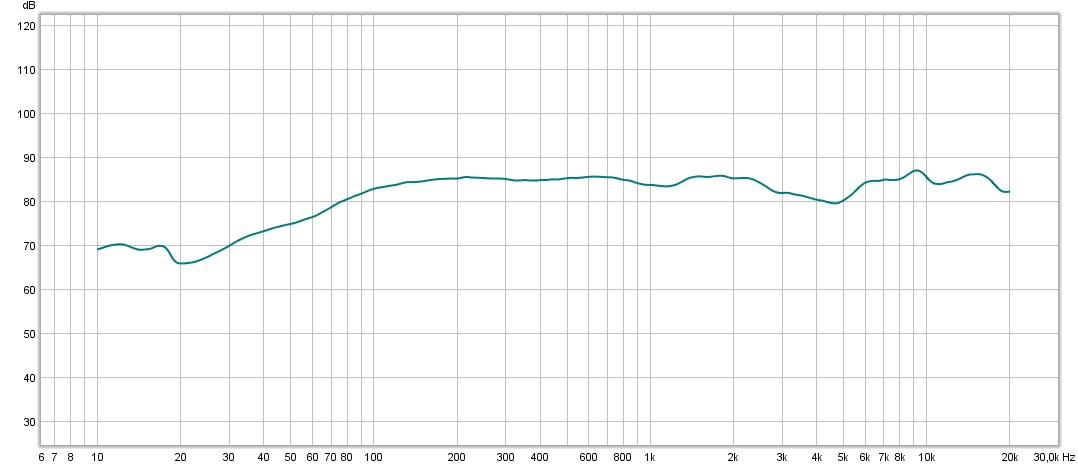
Very good IMO. There is quite a bit of valley from 2,5kHz to 5,5kHz which could be audible, but the peaks in upper frequencies don't seem half that bad anymore. This is still missing BSC, but the speakers will be sitting next to a wall on a computer table and listened to mostly nearfield, so it's likely that they only require a very slight compensation.
Very good IMO. There is quite a bit of valley from 2,5kHz to 5,5kHz which could be audible, but the peaks in upper frequencies don't seem half that bad anymore. This is still missing BSC, but the speakers will be sitting next to a wall on a computer table and listened to mostly nearfield, so it's likely that they only require a very slight compensation.
Attachments
Bit of progress with my not-so-highend project 
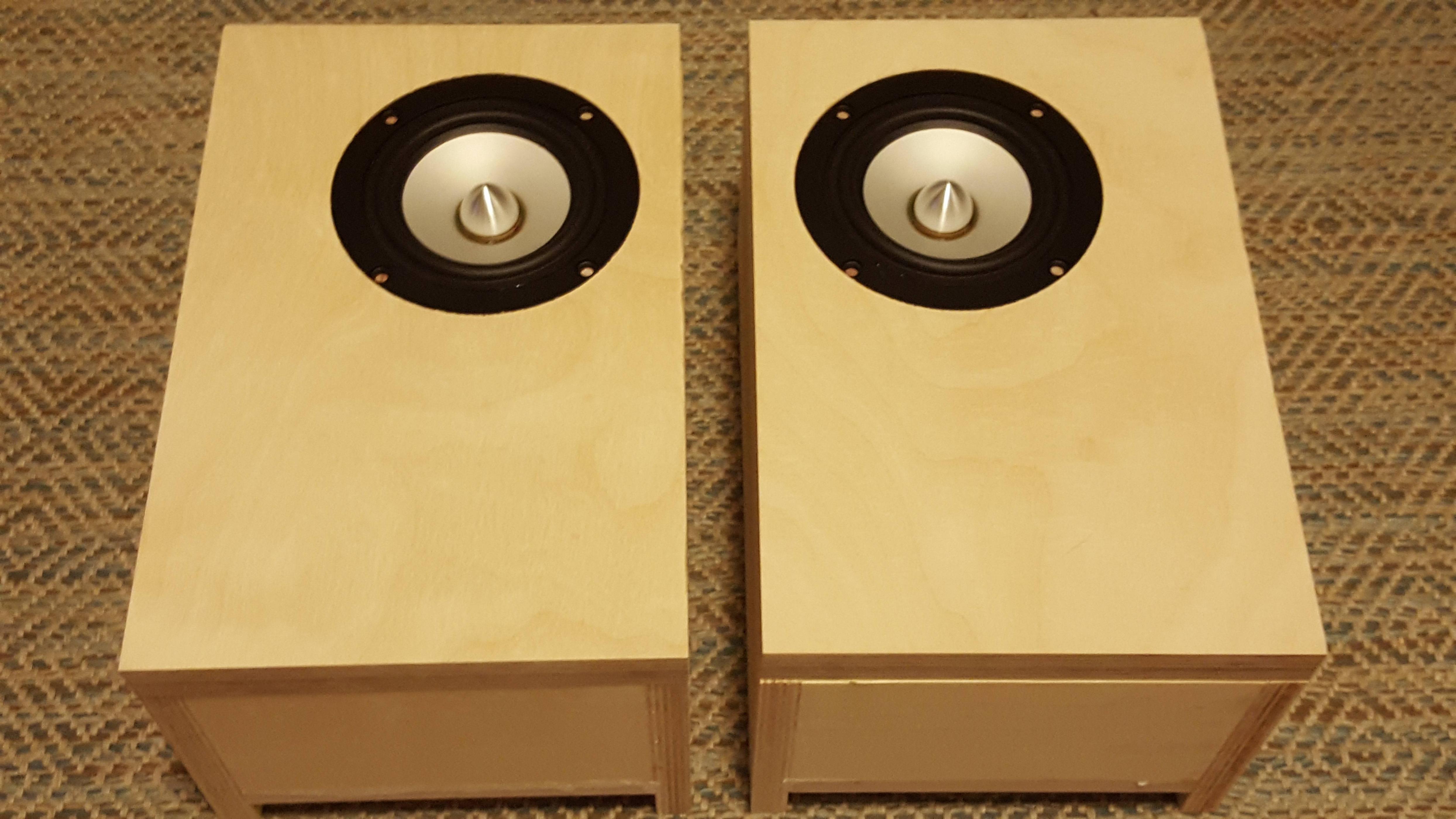
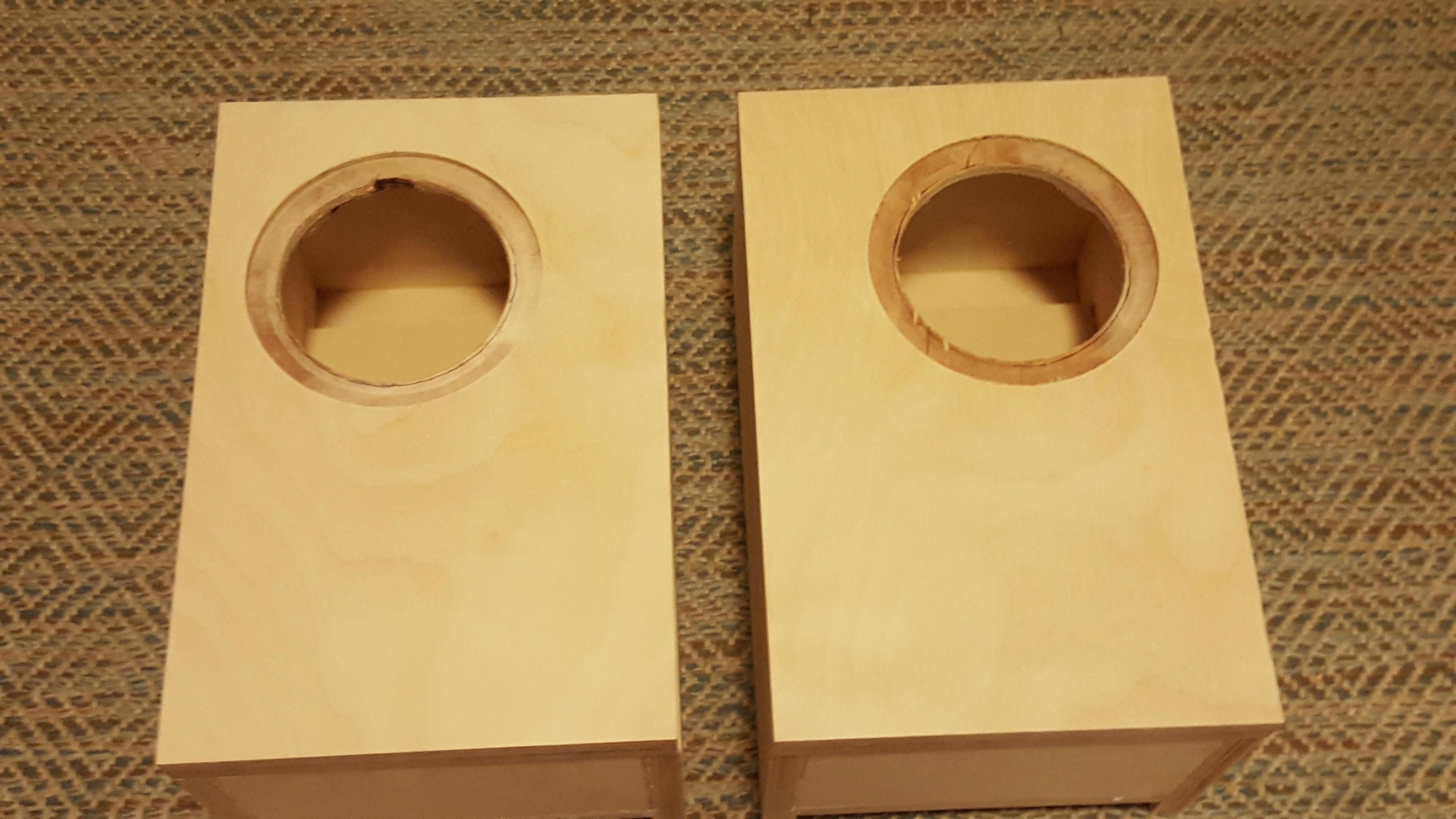
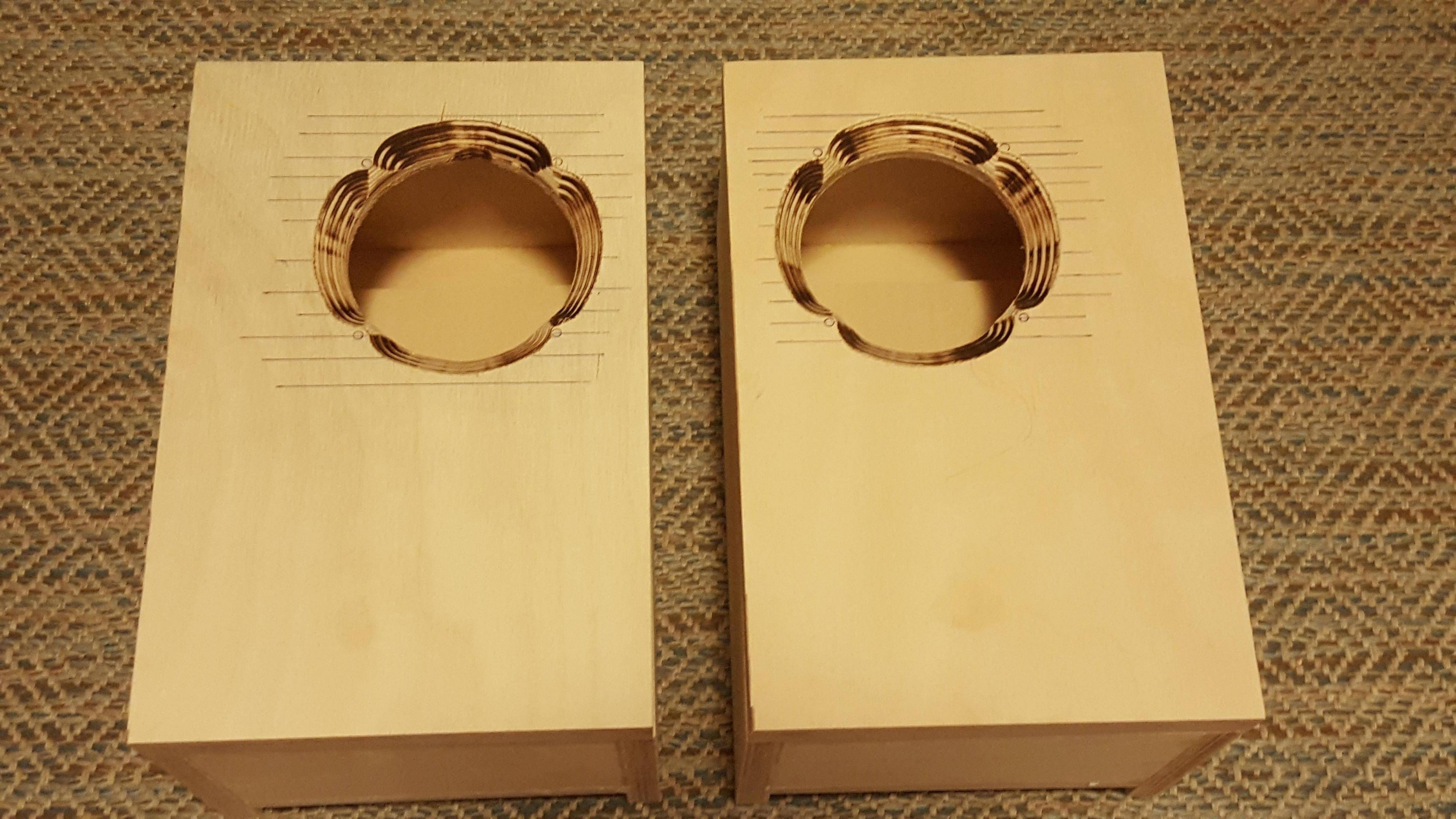

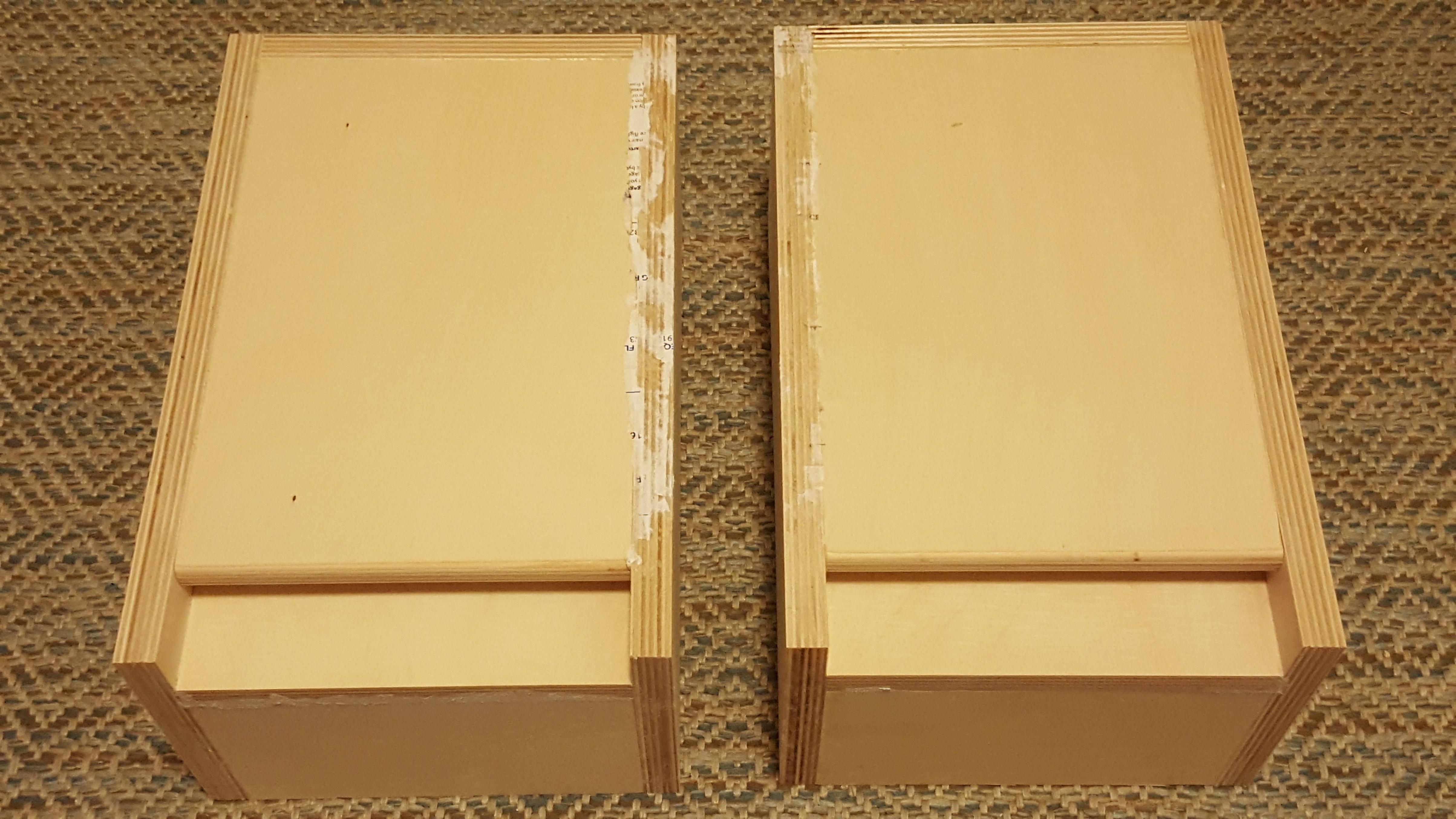
Enclosures are otherwise almost done (still lack sanding and finishing), but the damn postal service is slacking off. My parts have been on their way for almost a month now! Can't progress before I got my RCA plugs, power supplies and amplifiers...

I had to make a custom router rig to flush mount the drivers. It was actually surprisingly good, I managed to route the right size flush with 0.1mm accuracy. With this, I can route flush mounting holes for drivers between 3-12".
Enclosures are otherwise almost done (still lack sanding and finishing), but the damn postal service is slacking off. My parts have been on their way for almost a month now! Can't progress before I got my RCA plugs, power supplies and amplifiers...
I had to make a custom router rig to flush mount the drivers. It was actually surprisingly good, I managed to route the right size flush with 0.1mm accuracy. With this, I can route flush mounting holes for drivers between 3-12".
Attachments
Measurements and crossover design ongoing. So far, best seems to be full-range running only with speaker-level BSC and 2,2uF cap on tweeter with simple level matching on line level.
EDIT: MiniDSP is pretty much the handiest thing since sliced bread. I should have bought this earlier
Attachments
Last edited:
I did two measurements on 75db level mic first 30cm and then 60cm from the speaker, nearly at speaker level. This is just the full range on the enclosure. The tweeter is on the hole blocking air, I just put the tape as a extra measure to prevent leaks. The 30cm measurement is gated to 6ms, the 60cm to 5.3ms. The speaker has a BSC of 2mh coil with 3.9ohm resistor attached.

The whole ordeal seems too perfect, the response too smooth. The driver has less bass than I imagined with output decreasing after 100Hz. I am using a UMIK-1 with the calibration file. The impulse response is all over the place, it seems to ring like a bell even though with knuckle test the enclosure is very solid. I am a total noob with REW, and I highly suspect I'm doing something wrong with this.
I put the files in a dropbox folder if someone can lend a helping hand:
https://www.dropbox.com/sh/a843trib00xzerv/AADVnTQK2phAYYOvbQsLPJZpa?dl=0
The whole ordeal seems too perfect, the response too smooth. The driver has less bass than I imagined with output decreasing after 100Hz. I am using a UMIK-1 with the calibration file. The impulse response is all over the place, it seems to ring like a bell even though with knuckle test the enclosure is very solid. I am a total noob with REW, and I highly suspect I'm doing something wrong with this.
I put the files in a dropbox folder if someone can lend a helping hand:
https://www.dropbox.com/sh/a843trib00xzerv/AADVnTQK2phAYYOvbQsLPJZpa?dl=0
Attachments
Last edited:
.....I am using a UMIK-1 with the calibration file. The impulse response is all over the place, it seems to ring like a bell even though with knuckle test the enclosure is very solid. I am a total noob with REW, and I highly suspect I'm doing something wrong with this.....
Nice churchbell : )
That +15dB 8,4kHz peak is mostly the reason for that ringing, documentation is below for 30cm mdat-file where you see what happens when EQed, all windows is there so you can see settings done in REW's EQ tab and second picture show improvements into waterfall when EQed and timing gets better (by the way exercise is done with inverted impulse).
That said there is some pre-ringing in IR and think if you benchmark your measurement chain with loopback cables you can find where its coming from and have REW build a calibration-file that you tick on when that chain is used, and once you have that calibration file created it can also be added to these two measurements you shared with us with button "Change Cal". My own experience with UMIK-1 is that because its a locked 24bit/48kHz device then always before measurements ensure that your windows soundcard is set to same so you not get sample rate distortion/mismatch.
Attachments
I see, thanks BYRTT. I'm planning on using a -24db/oct LR crossover at 5kHz between the tweeter and FR discussed here for these speakers. It will hopefully filter that peak a lot.
The new measurement has been added in the dropbox folder. It is at 60cm, with the soundcard also set on 24bit/48kHz. Is there still some pre-ringing? Is it possible to simulate the effects of a typical LR 4th order filter on this?
The new measurement has been added in the dropbox folder. It is at 60cm, with the soundcard also set on 24bit/48kHz. Is there still some pre-ringing? Is it possible to simulate the effects of a typical LR 4th order filter on this?
Last edited:
.....The new measurement has been added in the dropbox folder. It is at 60cm, with the soundcard also set on 24bit/48kHz. Is there still some pre-ringing? Is it possible to simulate the effects of a typical LR 4th order filter on this?
There is still pre-ringing and is probably coming from devices in your chain other than UMIK-1 which already have correction-file from miniDSP added. In first plot i marked pre-ringing with light-grey ellipse and black trace there is to compare IR from a 130Hz (BW2) - 15kHz (BW8) band-pass made in Rephase and imported into REW as IR.wav-file. Think if you run loopback test with rest of chain and make calibration-file for that chain as guided in REW "Preferences" "Soundcard" tab then you should get clean IR with that correction file loaded.
Can think of two ways with REW to live simulate LR4 5kHz low pass to your measurement. First is using build in "EQ" button as shown in next attachment where two cascaded BW2 filters adds as LR4 low pass slope. Second way is let Rephase output a 48kHz low pass IRR filter at 5kHz LR4 and then when imported to REW then on "All SPL" tab you can mark your measurement as "A" and LP filter as "B" and then pick math "Times" and hit "Generate" will make the new plot as seen in third attachment. Attach also that 5kHz LP filter generated in Rephase as "impulse.zip" below.
Attachments

And they are done! I had a catastrophic weekend concerning audio as I managed to burn one of the Sure TPA-3110s that were supposed to power the speakers. They are now powered by 4x TDA8932. Also no matter what, my fancy 4th order LR filter wouldn't stop adding extra noice to the output. I know it originated from either the HF side or it could have just been the Sure going bad. So, now it has simple 1st order PLLXO (5kHz for LP, 7kHz for HP) plus -6db line level attenuation and speaker level 2.2uF protection cap for tweeter. The polarity is also reversed. Surprisingly, it sounds excellent. Affixing the drivers to the enclosure solidly made a big difference compared to thei earlier demos.
I sank over 24 hours on the last 2 days in finishing the electronics, and even through getting to the finish with Plan D, listening to these with a glass of brandy makes it all seem worth it.
Last edited:
- Status
- This old topic is closed. If you want to reopen this topic, contact a moderator using the "Report Post" button.
- Home
- Loudspeakers
- Full Range
- TB W4-657SC with Dayton Mini-8
